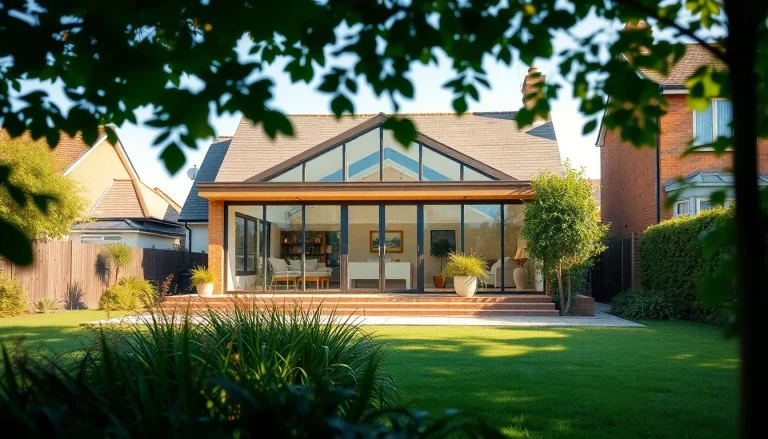Understanding Hotel Room Wardrobes
Hotel room wardrobes play a crucial role in providing guests a comfortable and organized experience during their stay. Whether you are a hotel owner, interior designer, or simply someone interested in the hospitality sector, understanding the nuances of hotel wardrobes is essential. From maximizing small spaces to offering elegant designs, Hotel Room Wardrobes can greatly influence a guest’s impression of the hotel. This article delves into various aspects of hotel wardrobes, exploring their importance, types, design trends, and more.
What Makes a Wardrobe Essential in Hotel Rooms
The essential function of wardrobes in hotel rooms cannot be overstated. They offer guests a designated space to store their clothing and personal items, which improves overall organization and tidiness. A well-designed wardrobe can enhance guest satisfaction by providing not only aesthetic appeal but also practical functionality. Additionally, hotel wardrobes contribute to the overall branding and atmosphere of the hotel, acting as a silent reflection of the hotel’s style and quality.
Types of Hotel Room Wardrobes
Hotel room wardrobes come in various designs and configurations to meet the needs of different hotels and styles. The most common types include:
- Built-in Wardrobes: These are fixed installations within the wall, often designed to maximize space in smaller rooms while providing ample storage.
- Freestanding Wardrobes: These can be moved and repositioned, offering flexibility in layout and design, suitable for hotels looking to frequently update their aesthetics.
- Open Wardrobes: Increasingly popular in modern designs, open wardrobes provide easy access to clothing and personal items while giving a spacious, airy feel to the room.
- Custom-designed Wardrobes: Tailored to fit specific hotel themes, these wardrobes are created to blend seamlessly with the room’s decor and enhance the guest experience.
Design Trends in Hotel Wardrobes
Recent trends in hotel wardrobe design reflect a demand for both style and sustainability. Minimalist designs, which emphasize clean lines and open space, are becoming increasingly common. Furthermore, hotel guests gravitate towards multifunctional wardrobes that utilize smart design to maximize storage efficiency. Incorporating materials like reclaimed wood and eco-friendly metals not only appeals to environmentally conscious travelers but also aligns with the growing trend of sustainable hospitality practices. Finally, integrating LED lighting within wardrobes is becoming a norm, enhancing functionality as well as visual appeal.
Choosing the Right Hotel Room Wardrobe
Factors to Consider for Hotel Wardrobe Selection
Selecting the right hotel room wardrobe requires careful consideration of several factors. First, evaluate the target demographic of the hotel. For instance, a luxury hotel might opt for elegant and spacious wardrobes, while a budget-friendly establishment might prioritize functionality and cost-effectiveness. Additionally, it’s crucial to consider the room size and layout. A wardrobe that overwhelms a small space could detract from the overall guest experience.
Evaluating Functionality vs. Aesthetic Appeal
Balancing practicality with design aesthetics is a vital aspect of wardrobe selection. While every hotel wants to impress guests with beautiful interiors, the wardrobe must serve its purpose efficiently. Elements such as hanging rails, shelving, and drawer space should be carefully planned to cater to various guest needs. Functionalities like built-in luggage racks and adjustable shelves can add significant value, making a strong case for functionality over pure aesthetic appeal when necessary.
Budget Considerations for Hotel Closet Solutions
Budget constraints are an inevitable part of any hotel operation. When selecting wardrobes, it is essential to find a balance between cost and quality. Investing in durable materials may incur higher upfront costs but will save money in the long run by reducing the need for replacements. Additionally, sourcing wardrobes from wholesale manufacturers or bulk buying can help cut costs. Architects and designers should work closely with manufacturers to agree on pricing while ensuring that quality does not get compromised.
Designing Custom Hotel Room Wardrobes
Collaboration with Furniture Manufacturers
Collaborating with experienced furniture manufacturers is vital for creating custom hotel room wardrobes that meet specific design standards and requirements. A good partnership can result in wardrobes that not only fulfill practical storage needs but also align with the hotel’s branding. Manufacturers can provide insights into material selection, engineering, and finishes, ensuring that the final product is both functional and visually appealing.
Incorporating Brand Identity into Wardrobe Design
The wardrobe design should reflect the hotel’s unique brand identity. For instance, a boutique hotel might opt for quirky, colorful styles, while a business hotel may lean toward sleek and professional aesthetics. Incorporating brand colors, logos, and thematic elements into the wardrobe design can enhance the overall guest experience and reinforce brand recognition among travelers.
Case Studies: Successful Hotel Wardrobe Implementations
Examining case studies of successful hotel wardrobe implementations can provide valuable lessons for hotel owners and designers. For example, a recent renovation at a luxury urban hotel showcased bespoke wardrobes that integrated smart technology, such as built-in charging stations and touch-sensitive lighting. Feedback from guests highlighted how these features added to their convenience and comfort, ultimately boosting the hotel’s reputation.
Wardrobe Maintenance and Upkeep
Best Practices for Long-lasting Hotel Wardrobes
Maintenance is pivotal in extending the lifespan of hotel wardrobes. Establishing a regular cleaning schedule, ensuring that surfaces are free from dust and grime, significantly contributes to the longevity of the wardrobe. Additionally, inspecting hinges, shelves, and closing mechanisms regularly can prevent minor issues from developing into significant repairs. Hotels should also consider staff training on proper handling and maintenance practices to minimize wear and tear.
Seasonal Maintenance Tips for Wardrobe Longevity
Seasonal maintenance can significantly enhance wardrobe longevity. During peak seasons, wardrobes should be assessed for wear caused by high turnover rates of guests. Ensuring enough changes in organization or restocking of supplies can lead to an improved guest experience. Conversely, off-seasons can be ideal for deep-cleaning and more extensive maintenance activities, including repairing scratches, re-staining wood, or checking for signs of pests.
Responding to Guest Feedback for Continuous Improvement
Guest feedback can provide invaluable insights into wardrobe functionality and design. Implementing a system for collecting and analyzing this feedback can help hotels refine their offerings. For instance, if multiple guests mention that hanging space is insufficient, hotels can consider redesigning wardrobes or adding additional hanging options. Continuous improvement based on actual user experience not only enhances guest satisfaction but also establishes a proactive approach to hospitality management.
Future Trends in Hotel Room Wardrobes
Innovations in Design and Functionality
As the hospitality industry evolves, so too will the designs and functionalities of hotel room wardrobes. Innovations such as integrated sensors that monitor guest usage and adjust internal features accordingly are on the rise. Furthermore, augmented reality applications that allow guests to visualize garment options or packing tips by scanning their luggage or wardrobe can enhance their experience even further.
Smart Storage Solutions for Modern Hotels
In an age where space is often at a premium, smart storage solutions will play a vital role in hotel wardrobe design. Features like foldable shelves, collapsible hanging rods, and modular components can optimize limited space. Moreover, the rise of ‘smart’ furniture, which incorporates technology to enhance usability—such as automated shelving that adjusts based on user preferences—will likely become mainstream in modern hotel designs.
The Impact of Sustainability on Wardrobe Choices
Sustainability is no longer just a trend; it is becoming a necessity in hotel designs, including wardrobes. Materials sourced from sustainable forests or recycled components are increasingly being selected to meet eco-friendly standards. Not only does this appeal to the environmentally conscious traveler, but it also sets hotels apart as leaders in sustainable practices, enhancing their brand image and marketability.






